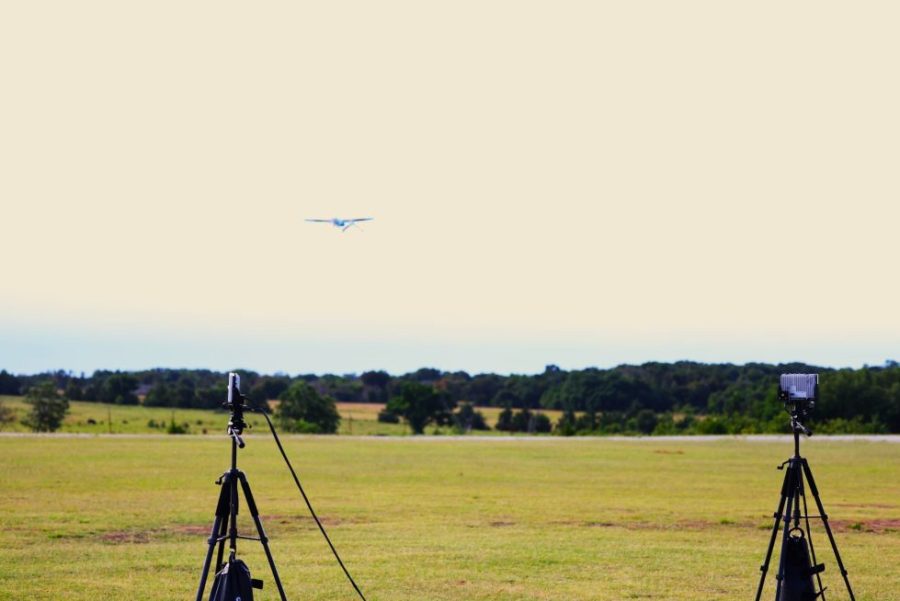When DJI put sense and avoid technology in its DJI Phantom 4 back in August 2016, it blew minds. Such smart technology in a consumer drone seemed unheard of. Fast-forward less than 10 years later, and you can find such technology in drones under $500. Even $1,000 drones have multiple sensors that can detect objects at all angles. So what’s next for detect and avoid technology. Companies like Vigilant Aerospace aren’t stopping there.
No, they’re pushing the limits of drone detect and avoid technology further.
This summer, Vigilant Aerospace shared an update on a half-million dollar project that it’s working on with the Oklahoma Center for the Advancement of Science and Technology (OCAST) and the US Economic Development Administration. Together, they’re seeking to built an even more advanced detect-and-avoid and airspace management system using a Vigilant Aerospace software called FlightHorizon.
FlightHorizon software was built out of ideas from two NASA patents, and its data sources include aircraft transponders, radar, drone autopilots, and live FAA data. The system is unique in that it integrates three different models and types of radar simultaneously, theoretically offering wider area coverage. That’s critical in enabling a future of drone flight corridors (or drone superhighways, as some call them) and even drone ports, like those seen in the United Arab Emirates that are effectively airports for drones (including human-carrying drones referred to as air taxis).
The three types of radar at hand are:
- EchoGuard radar: best for localized, portable ground-based DAA for small drones
- EchoFlight radar: best for advanced air mobility (AAM) cargo drones, military UAS and air taxis.
- DeTect 7360 air traffic surveillance radar: best for larger air traffic areas like drone ports.
That last system, the DeTect 7360 is especially standout as a new type of radar technology with a detection diameter of 14 kilometers and 360-degree coverage. In fact, FlightHorizon is the first integrated detect-and-avoid and airspace management system in the world to utilize this new 3D, digital radar.
Additional integrated data sources include receipt of ADS-B transponder messages, autopilot integration, live FAA SWIM air traffic data, live weather radar from NWS, air navigation charts and many other data layers.
So what’s the big deal about all of this?
“Demonstrating these capabilities is the first step in validating that the system meets with industry technical standards including the RTCA DO-365C standard for detect-and-avoid systems for larger UAS and the ASTM F3442/F3442M-23 standard for detect-and-avoid for small UAS aircraft,” according to a statement from Vigilant Aerospace.
For now, the radar test is exactly that — a test. But the test is extensive, and comprehensive. The Vigilant Aerospace tests use a mix of aircraft including multi-rotor drones, fixed-wing drones and small piloted Cessna aircraft.
“The goal of the mix of aircraft is to test and document both the detection ranges of the various radars and the effectiveness of the entire system in providing multi-sensor, distributed detect-and-avoid,” according to a statement from Vigilant Aerospace.
Why Oklahoma?
The hotbed testing ground is in Oklahoma, at the Oklahoma Center for the Advancement of Science and Technology (OCAST). That site is the state’s agency for technology-based economic development efforts, and is also affiliated with Oklahoma State University.
The team in May 2024 received a $500,000 grant. That was part of a larger $1 million project centered around developing a distributed version of its detect-and-avoid system. A competitive program called the Oklahoma Applied Research Support (OARS) issued the grant. The grant’s goal is to support businesses developing innovations and technologies that create new jobs and diversify Oklahoma’s economy. It also has backing from the US Economic Development Administration (EDA) as part of the $38.2 million Build Back Better grant awarded to a Tulsa-based coalition to support new aerospace initiatives in Oklahoma.
Oklahoma is also home to Skyway36, which is being billed as a droneport (aka an airport for drones). With that comes an indoor, state-of-the-art drone test facility. Then there’s a 3,000-foot runway for larger, fixed-wing drones. And yes, Vigilant Aerospaces provides the droneport’s airspace management and UTM system.
Other big superhighways out there to know beyond Oklahoma include one in New York. There’s also one in the southeast of the United Kingdom.
What to expect from detect and avoid technology in drones going forward?
What do today’s tests mean for the drone industry in the future? Powerful sense and avoid systems make it possible for drones and drone ports to cover larger operating areas. Smarter radar would allow airspace to get busier without compromising safety.
“With technology evolving rapidly in this space, it is important that we integrate and test the latest sensors in a rigorous way, and these live field and flight tests with general aviation aircraft are the best way to test real-world performance and prove out real-world safety,” said Kraettli Epperson, CEO of Vigilant Aerospace.
Discover more from The Drone Girl
Subscribe to get the latest posts sent to your email.

